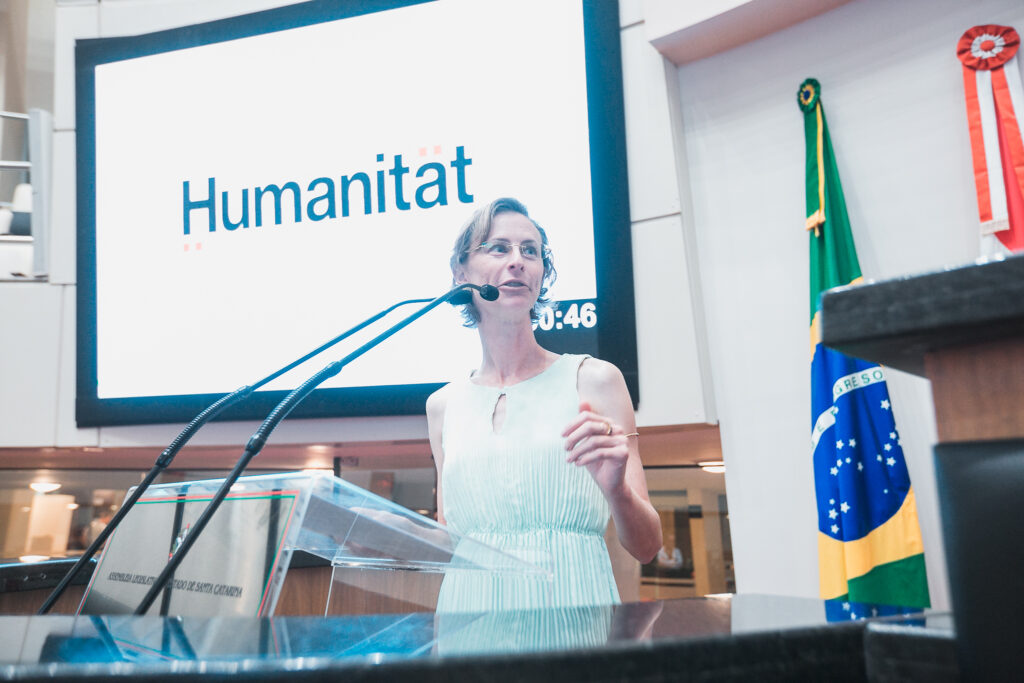By Alexandre Back AL AGENCY
Access the original article at the LINK
Watch the video of the speech HERE

Urban Ecosystem Architect from the Humanität organization, Carolina Viviane Nunes PHOTO: Bruno Collaço / AL AGENCY
Carolina Viviane Nunes, the Urban Ecosystem Architect from the Humanität organization, took the floor at the State Legislative Assembly on Thursday morning (21) to present a development project for the cities in Santa Catarina, based on the legacy of the German naturalist and researcher, Fritz Müller (1822-1897).
Carolina, who was also representing the Association for the Preservation of Nature in Santa Catarina (Acaprena), stated that Santa Catarina is a state with small and medium-sized cities at a “development crossroads,” where in many areas, growth occurs in a disorderly manner, resulting in areas without identity and the consequent loss of opportunities and quality of life for the population.
She mentioned that she sought references in Germany to propose a solution to this issue. As she explained, the European country has many cities that have faced the same problem and have sought to reinvent themselves by adding value to their unique characteristics.
As an example, she cited the city of Essen, whose economy was based on coal and steel industries, which had to find a new development model after the decline of the sector. To achieve this, a new paradigm based on the environment and culture was adopted.
The local river was cleaned and returned to its natural state, and a specific cycling route with environmental education provided by local artists was established. An industrial culture route was created, featuring attractions like artistic installations and events. An old coal mine, no longer in operation, became a cultural center and a UNESCO World Heritage site.
“With this, the city was able to become attractive once again for businesses and individuals looking to live, work, and invest there, leading to increased value and the attraction of green sector and technology jobs,” she argued.
Following the Path of Fritz Müller
The architect declared that the municipalities in Santa Catarina could adopt the same solution. “My proposal is for Santa Catarina to also seek development through the environment and culture. And following in the footsteps of Fritz Müller is a step in that direction.”
Known for his collaboration with the English researcher Charles Darwin in formulating the book “On the Origin of Species,” Fritz Müller is also a prominent figure in the international scientific community for his studies of invertebrate fauna and the flora of Santa Catarina. The excursions conducted by the German naturalist in his exploratory and scientific work covered various municipalities in Santa Catarina.
“Fritz Müller left a legacy in the Santa Catarina cities he visited, indicating various elements in each of them. We can create the Routes of Fritz Müller, a tourist route throughout the state, enriched with cultural and artistic elements, environmental education, and scientific initiatives.”
In addition, she advised municipalities to establish policies with urban and regional planning guidelines.
